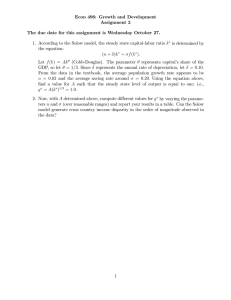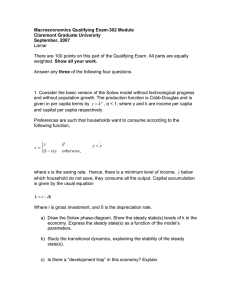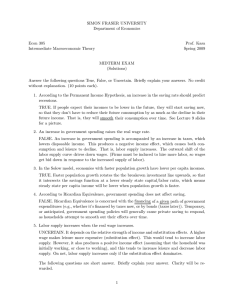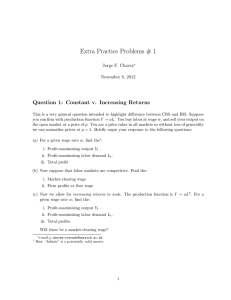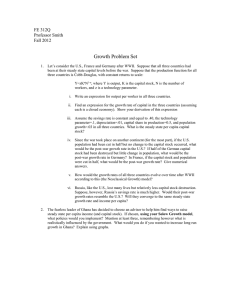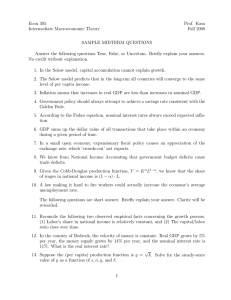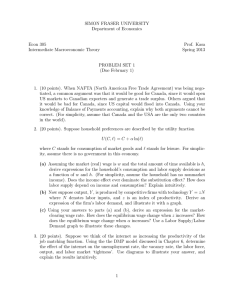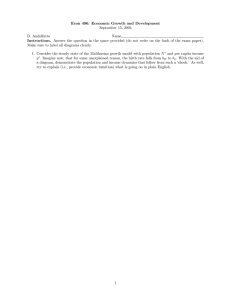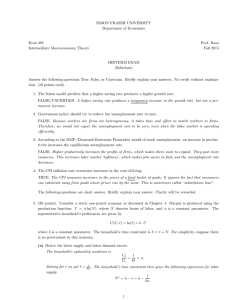SIMON FRASER UNIVERSITY Department of Economics Econ 305 Prof. Kasa
advertisement
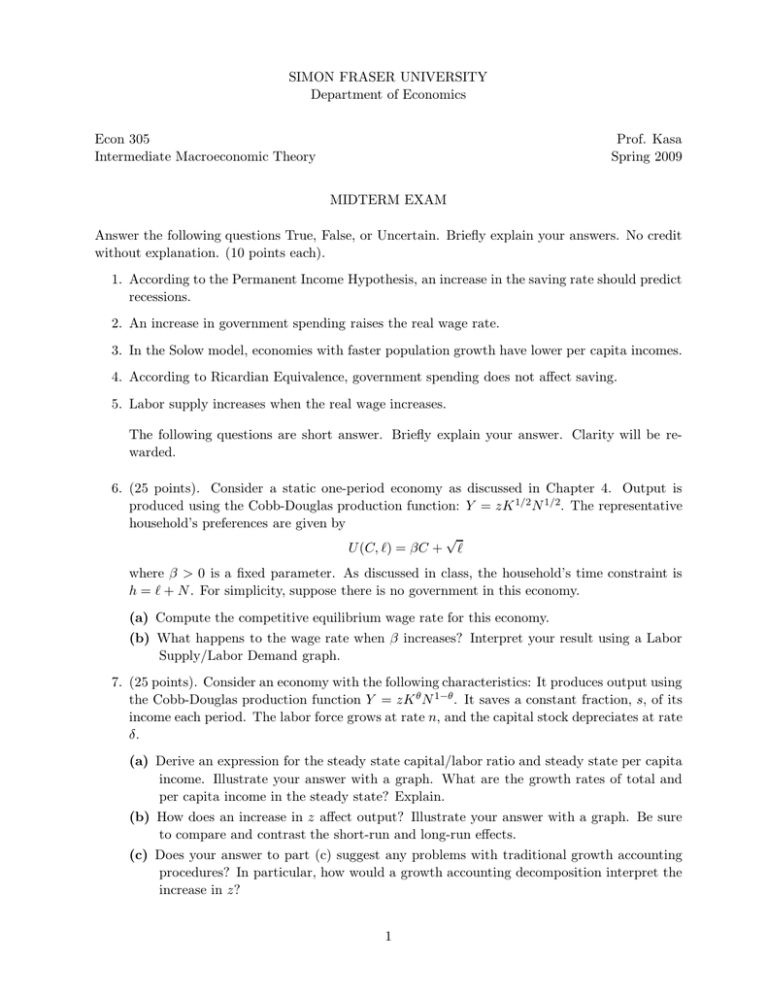
SIMON FRASER UNIVERSITY Department of Economics Econ 305 Intermediate Macroeconomic Theory Prof. Kasa Spring 2009 MIDTERM EXAM Answer the following questions True, False, or Uncertain. Briefly explain your answers. No credit without explanation. (10 points each). 1. According to the Permanent Income Hypothesis, an increase in the saving rate should predict recessions. 2. An increase in government spending raises the real wage rate. 3. In the Solow model, economies with faster population growth have lower per capita incomes. 4. According to Ricardian Equivalence, government spending does not affect saving. 5. Labor supply increases when the real wage increases. The following questions are short answer. Briefly explain your answer. Clarity will be rewarded. 6. (25 points). Consider a static one-period economy as discussed in Chapter 4. Output is produced using the Cobb-Douglas production function: Y = zK 1/2N 1/2. The representative household’s preferences are given by √ U (C, `) = βC + ` where β > 0 is a fixed parameter. As discussed in class, the household’s time constraint is h = ` + N . For simplicity, suppose there is no government in this economy. (a) Compute the competitive equilibrium wage rate for this economy. (b) What happens to the wage rate when β increases? Interpret your result using a Labor Supply/Labor Demand graph. 7. (25 points). Consider an economy with the following characteristics: It produces output using the Cobb-Douglas production function Y = zK θ N 1−θ . It saves a constant fraction, s, of its income each period. The labor force grows at rate n, and the capital stock depreciates at rate δ. (a) Derive an expression for the steady state capital/labor ratio and steady state per capita income. Illustrate your answer with a graph. What are the growth rates of total and per capita income in the steady state? Explain. (b) How does an increase in z affect output? Illustrate your answer with a graph. Be sure to compare and contrast the short-run and long-run effects. (c) Does your answer to part (c) suggest any problems with traditional growth accounting procedures? In particular, how would a growth accounting decomposition interpret the increase in z? 1
